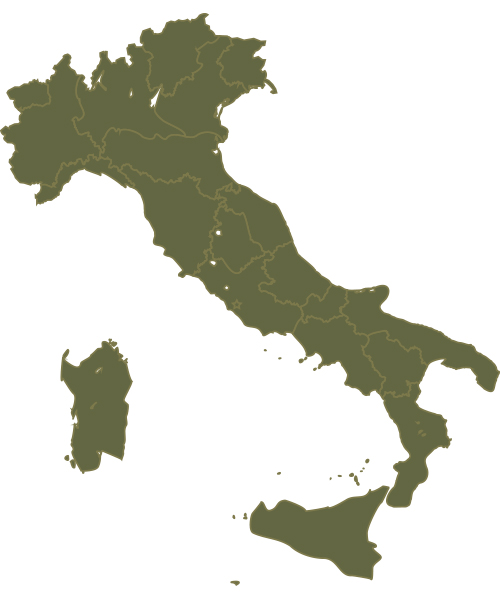For the perfect fusion of food, wine and culture, there is simply nowhere like Italy. It’s no surprise that wine tours in Italy have grown tremendously in popularity. Beyond wine country there is so much more: the canals of Venice, the leaning tower of Pisa, the Roman Coliseum, the halls of the Vatican or sunny Mediterranean beaches. Every corner of Italy is steeped in history and rich in the treasures of the past, but alive with cutting edge style. A wine getaway in Italy means experiencing la dolce vita – the sweet life.
Etruscans and Greek settlers produced wine in Italy before the Romans planted their own vineyards in the 2nd century AD. The Romans greatly increased Italy’s area under vine using efficient viticultural and winemaking methods, and pioneered large-scale production and storage techniques such as barrel-making and bottling.
Italy’s twenty wine regions correspond to the twenty administrative regions of the country. Understanding the differences between these regions is very helpful in understanding the different types of Italian wine. Wine in Italy tends to reflect the local cuisine. Regional cuisine also influences the wine. The 73 DOCG wines are located in 15 different regions but most of them are concentrated in Piedmont, Lombardia, Veneto and Tuscany. Among these are appellations appreciated and sought after by wine lovers around the world: Barolo, Barbaresco, and Brunello di Montalcino (colloquially known as the “Killer B’s”).

For the perfect fusion of food, wine and culture, there is simply nowhere like Italy. It’s no surprise that wine tours in Italy have grown tremendously in popularity. Beyond wine country there is so much more: the canals of Venice, the leaning tower of Pisa, the Roman Coliseum, the halls of the Vatican or sunny Mediterranean beaches. Every corner of Italy is steeped in history and rich in the treasures of the past, but alive with cutting edge style. A wine getaway in Italy means experiencing la dolce vita – the sweet life.
Etruscans and Greek settlers produced wine in Italy before the Romans planted their own vineyards in the 2nd century AD. The Romans greatly increased Italy’s area under vine using efficient viticultural and winemaking methods, and pioneered large-scale production and storage techniques such as barrel-making and bottling.
Italy’s twenty wine regions correspond to the twenty administrative regions of the country. Understanding the differences between these regions is very helpful in understanding the different types of Italian wine. Wine in Italy tends to reflect the local cuisine. Regional cuisine also influences the wine. The 73 DOCG wines are located in 15 different regions but most of them are concentrated in Piedmont, Lombardia, Veneto and Tuscany. Among these are appellations appreciated and sought after by wine lovers around the world: Barolo, Barbaresco, and Brunello di Montalcino (colloquially known as the “Killer B’s”).
Tradesa Corp.
618A Fleet St., Toronto, Ontario, Canada
M5V 1B9
Phone
416.944.WINE (9463) / 416.924.VINO (8466)
Fax: 416 928 0908

